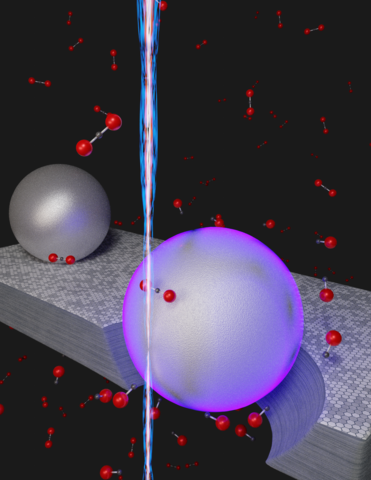2020/11/2 シンガポール国立大学(NUS)

・ NUSが、より高精度のウェアラブルセンサー技術やタクタイル(触感)センシングを可能にする、 ヒステリシスを大幅に低減したフレキシブルセンサー材料の「Tactile Resistive Annularly Cracked E-Skin (TRACE)」を開発。
・ リアルタイムのヘルスモニタリングやセンシングには、ソフトなエレクトロニクスが必要だが、そのフレキシブル性により性能の信頼性が一定とならない、ヒステリシスが課題となっている。
・ ソフトでフレキシブルな材料を使用した圧縮力センサーでは、ヒステリシスの問題が深刻。ソフトなセンサー材料の特性が繰り返しの接触で変化し、データの信頼性に影響を及ぼす。正確な情報を継続して得ることができないため、センサーアプリケーションが制限される。
・ 今回開発の「TRACE」は、高感度およびヒステリシスがほぼフリーの性能の、通常では両立できない関係にある両特性を実現する。フレキシブルな材料のポリジメチルシロキサン(PDMS)に金属薄膜を環状のパターンに配置した金属/PDMS 膜を電極と基板に統合し、ピエゾ抵抗センサーを作製して機械的な検査を繰り返し実施後、センサーの精度と信頼性の向上を確認した。
・ 同「TRACE」センサーは、ロボティクスによる物質表面のテキスチャー認識や、浅動脈の血流を測定するヘルスケア用ウェアラブルデバイス等で使用できる。
・ 今後は、様々なウェアラブルアプリケーションに向けた材料の快適性の向上や、同センサーをベースとした AI アプリケーションの開発を試みる。
・ 同センサーでは、より正確なパルス速度測定データの獲得や表面テキスチャー予測の機械学習アルゴリズムの装備が可能なため、長期的な目標である、皮膚に貼り付けた小面積のパッチによる心臓血管の健康状態の予測も実現可能と考える。
URL: https://news.nus.edu.sg/new-flexible-and-highly-reliable-sensor/
<NEDO海外技術情報より>
(関連情報)
米国科学アカデミー紀要(PNAS)掲載論文(アブストラクトのみ:全文は有料)
Near-hysteresis-free soft tactile electronic skins for wearables and reliable machine learning
URL: https://www.pnas.org/content/117/41/25352
Abstract
Electronic skins are essential for real-time health monitoring and tactile perception in robots. Although the use of soft elastomers and microstructures have improved the sensitivity and pressure-sensing range of tactile sensors, the intrinsic viscoelasticity of soft polymeric materials remains a long-standing challenge resulting in cyclic hysteresis. This causes sensor data variations between contact events that negatively impact the accuracy and reliability. Here, we introduce the Tactile Resistive Annularly Cracked E-Skin (TRACE) sensor to address the inherent trade-off between sensitivity and hysteresis in tactile sensors when using soft materials. We discovered that piezoresistive sensors made using an array of three-dimensional (3D) metallic annular cracks on polymeric microstructures possess high sensitivities (> 107 Ω ⋅ kPa−1), low hysteresis (2.99 ± 1.37%) over a wide pressure range (0–20 kPa), and fast response (400 Hz). We demonstrate that TRACE sensors can accurately detect and measure the pulse wave velocity (PWV) when skin mounted. Moreover, we show that these tactile sensors when arrayed enabled fast reliable one-touch surface texture classification with neuromorphic encoding and deep learning algorithms.



